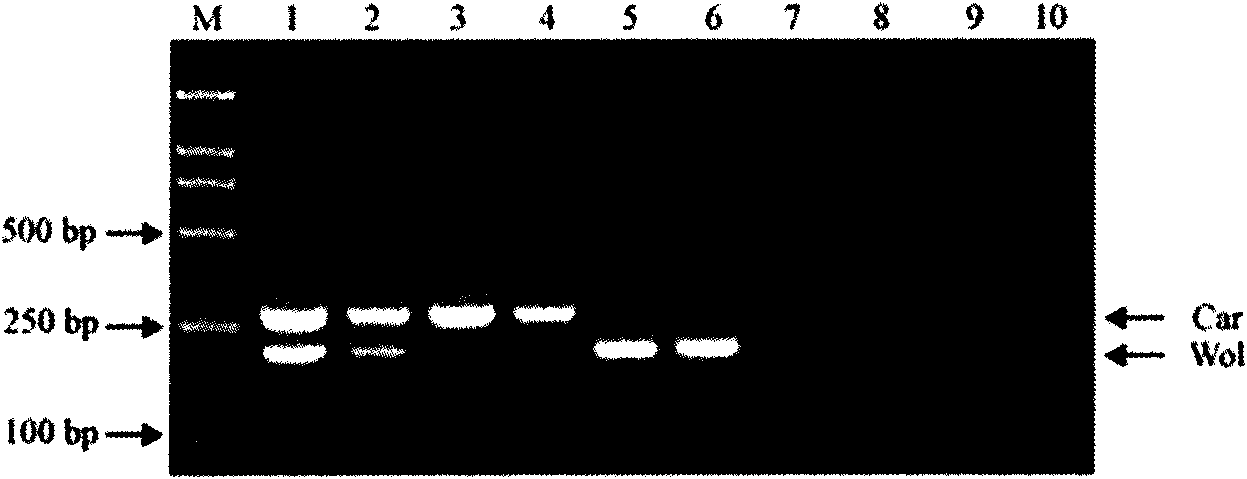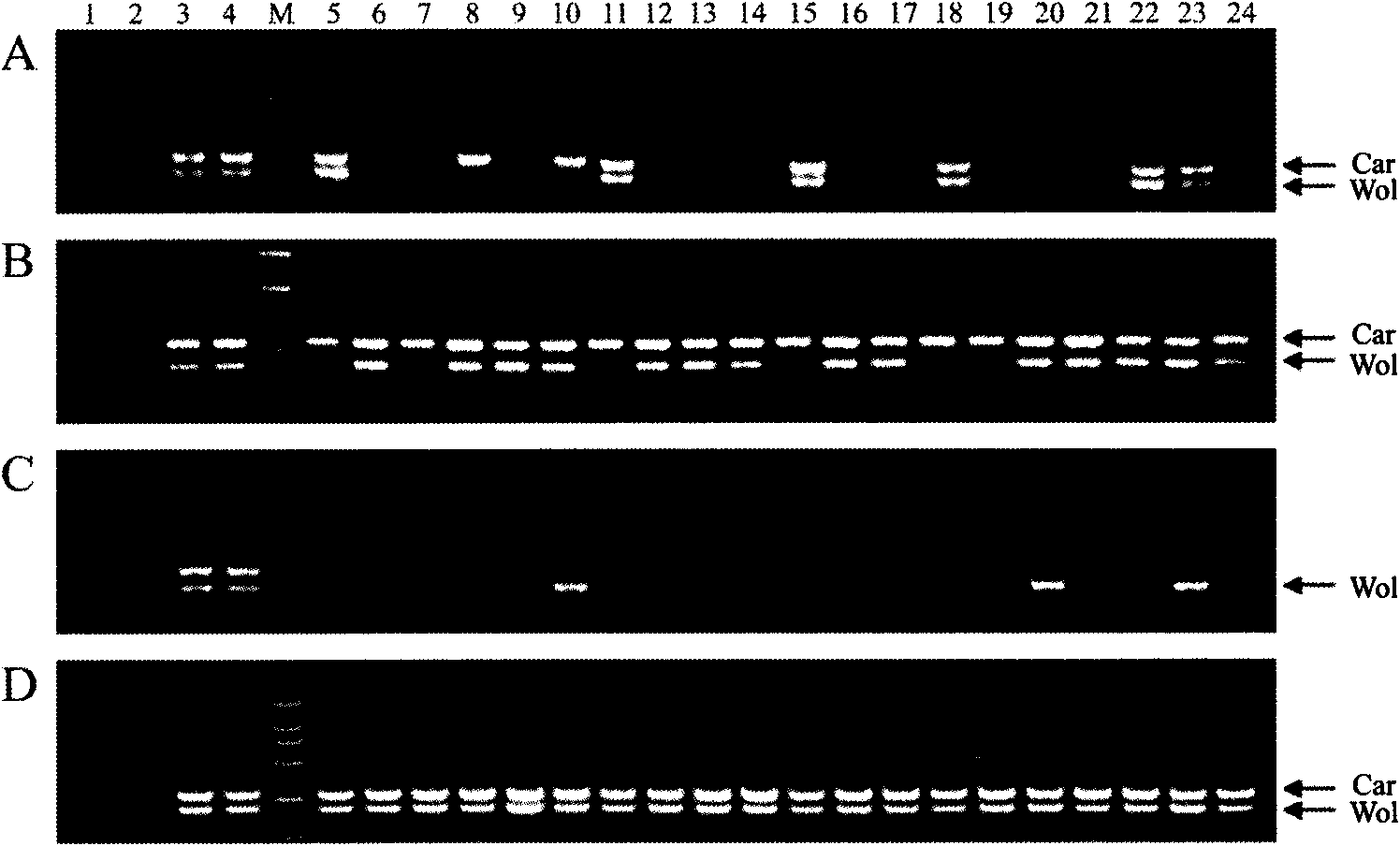Multiple PCR detection method for detecting symbiotic bacteria in tetranychus truncatus ehara body
A technology of symbiotic bacteria and mites, applied in the biological field, can solve the problems of consumables, labor consumption, and time consumption, and achieve the effects of reducing costs, improving efficiency, and saving time
- Summary
- Abstract
- Description
- Claims
- Application Information
AI Technical Summary
Problems solved by technology
Method used
Image
Examples
Embodiment Construction
[0040] 1. Suitable for multiplex PCR (Multiplex PCR) specific primer design
[0041] The symbiotic bacteria Wolbachia pipientis, referred to as Wolbachia, is well known and commonly used, see references (Hertig M. The rickettsia, Wolbachia pipientis (gen. et sp.n.) and associated inclusions of the mosquite Culex pipiens. Parasitology, 1936, 28: 453-486 ), the Chinese genus name is Wolbachia, and there is no Chinese species name.
[0042]The symbiotic bacterium Cardinium, that is, Candidatus Cardinium hertigii, is well known and public, see references (Zchori-Fein E, Perlman S J, Kelly S E, Katzir N, Hunter M S. Characterization of a'Bacteroidetes' symbiont in Encarsia wasps (Hymenopera: Aphelinidae): proposal of'Candidatus Cardinium Hertigii', Int.J.Syst.Evol.Microbiol., 2004, 54:961-968.), first named in 2004, no Chinese generic name yet.
[0043] Wolbachia's epidermal protein gene wsp gene is often used as a genetic marker for the detection of Wolbachia. So far, only one g...
PUM
 Login to View More
Login to View More Abstract
Description
Claims
Application Information
 Login to View More
Login to View More - R&D
- Intellectual Property
- Life Sciences
- Materials
- Tech Scout
- Unparalleled Data Quality
- Higher Quality Content
- 60% Fewer Hallucinations
Browse by: Latest US Patents, China's latest patents, Technical Efficacy Thesaurus, Application Domain, Technology Topic, Popular Technical Reports.
© 2025 PatSnap. All rights reserved.Legal|Privacy policy|Modern Slavery Act Transparency Statement|Sitemap|About US| Contact US: help@patsnap.com



